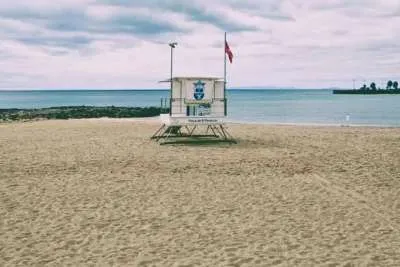Canary Islands Government have the ‘tools’ to set restrictions after the state of alarm
- 03-05-2021
- National
- Canarian Weekly
The end of the state of alarm, this Sunday May 9th, does not mean the end of restrictions. The Minister of Health for Spain, Carolina Darias, has reminded all of the autonomous communities today (Monday) that they have "sufficient tools and mechanisms to decree restrictions” and has focused on the document called 'Coordinated response actions to control the transmission of Covid- 19'.
This document was updated at the end of March, as a guide to take measures in this new scenario that starts from next Monday, without the ‘umbrella’ of the state of alarm. “The members of the Inter-territorial Council have approved documents that are the guideline. I hope that when we leave this pandemic behind we will have tools to continue facing potential threats and that communities continue to apply them as they are now. We believe that the legislation that we have in place is sufficient alongside the measures that the Inter-territorial Council have been taking as well,” said Darias.
Among other measures, this text includes the recommendation to close the interior of bars and restaurants in areas with a cumulative incidence (IA14) of more than 150 cases per 100,000 inhabitants, an epidemiological situation in which the majority of the mainland now finds itself in. In fact, only Valencia, Asturias, the Balearic Islands, the Canary Islands, Galicia and Murcia have a cumulative incidence below 150 cases over 14 days.
The document, which was agreed by the Ministry of Health and the communities, sets four levels of risk (very high, high, medium and low) that are determined by the following indicators:
- Cumulative incidence rate over 7 days (IA7).
- Cumulative incidence rate over 14 days (IA14).
- Cumulative incidence rate over 7 days of people over 65 years old.
- Cumulative incidence rate over 14 days of people over 65 years old.
- Positivity rate of PCR tests.
- Traceability of cases.
- Occupation of hospital beds by Covid patients.
- Occupation of ICU beds by Covid patients.
As a guide, an IA7 above 125 and and IA14 above 250, a positivity rate greater than 15%, a traceability of cases below 30 (ie only the contacts of 30 out of 100 positives are known), and an occupancy of more than 15% of hospital beds and 25% of ICU beds, place the level of risk in that area at 'very high'.
Depending on the levels, other measures are also decreed for the interior of the hospitality industry if cases exceed 500 (an incidence rate in which only the Basque Country is currently present), then the total closure of the hospitality industry is advised.
The debate, however, is that these measures are not mandatory, but only recommendations. Although Darias has insisted that the "coordinated statements" taken within the Inter-territorial Council are "mandatory", Health sources have recognized throughout the pandemic that these documents are only a "guide to action" because the final decision of the restrictions depends on each autonomous community individually.
In addition, other measures now in force, such as curfews, may decline after the end of the state of alarm, since they are restrictions on fundamental rights that, in principle, need the state of alarm to implement them.
Vaccination progress:
Darias also focused on the fact that either today or tomorrow, Spain will meet the second "milestone" of the vaccination plan, which is reaching five million people that have had their complete vaccination (either 2 doses or Janssen single dose). Darias stressed that "72% of those over 60 have already had at least one dose", a figure that rises to 80% in the age group of between 70 and 79. "We are complying with the vaccination plans," she said and insists that more than 70% of the population will be vaccinated by the end of August.
Other articles that may interest you...
Trending
Most Read Articles
Featured Videos
A Vision of Elvis Tenerife Promo
- 10-05-2025
Tenerife Travel Guide
- 13-12-2024
Live webcam from Lanzarote airport
- 13-12-2024





























































